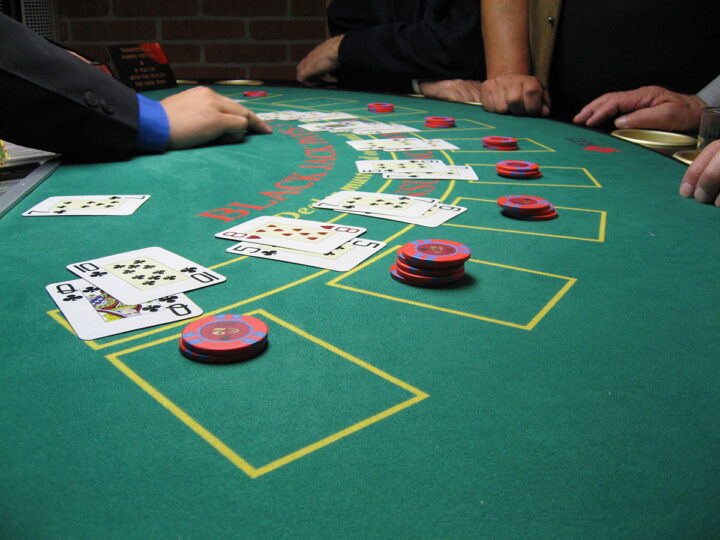With its combination of skill, chance, and the alluring prospect of outsmarting the house, blackjack is one of the most played casino games globally, drawing in both seasoned pros and beginners. Understanding the ideas of soft and hard hands is essential to learning blackjack strategy since it may greatly affect your gaming and decision-making.
This blog post explores these ideas in detail and provides a strategic analysis that should improve your comprehension and possibly increase your victory rate. The advice offered here will improve your blackjack experience regardless of your level of skill.
Understanding Soft and Hard Hands

A fundamental aspect of becoming proficient in BlackJack involves distinguishing between soft and hard hands. This differentiation affects how you should approach each game, influencing your decisions on hitting, standing, doubling down, or splitting. A soft hand contains an Ace counted as 11 without busting, offering flexibility and opportunities for risk-taking. Conversely, a hard hand either lacks an Ace or the Ace can only be valued at 1 to avoid busting, which generally requires a more cautious approach.
Soft hands are advantageous because of the flexibility they provide. Holding a soft hand means you have a lower risk of busting on your next hit, as the Ace can fluctuate between 11 and 1. This unique characteristic allows for more aggressive plays, such as doubling down or hitting in situations where you might otherwise stand. Understanding how to leverage flexibility can significantly influence the game’s outcome, offering opportunities to maximize wins and minimize losses.
Strategic Implications
When it comes to soft hands, the strategy often revolves around taking advantage of the flexibility your hand affords. For example, with a soft 17 (Ace-6), the standard advice is to hit, as the chance of improving your hand outweighs the risk of busting. Similarly, soft hands allow players to consider doubling down more frequently, especially when facing a dealer’s weak upcard. The strategic depth lies in evaluating when to embrace risk and when to adopt a more measured approach.
With hard hands, the approach shifts towards minimizing risk and making decisions based on statistical outcomes. For instance, standing on a hard 17 or higher is generally advisable because the odds of improving your hand are outweighed by the risk of busting. The strategy becomes a balancing act of knowing when to take a card and when to hold your position, often requiring a keen understanding of the dealer’s probabilities and the composition of the remaining cards in the shoe.
Advanced Considerations

While the basic strategy provides a solid foundation, advancing your game to include techniques like card counting can offer an edge in making more informed decisions regarding these hands. Card counting allows players to keep track of the high and low cards that have been dealt, giving insight into the probability of receiving a beneficial card. This knowledge can significantly influence your strategy, allowing for more nuanced and potentially profitable decisions.
It’s important to note that different blackjack variants might require adjustments to your soft and hard-hand strategies. For instance, the rules regarding doubling down, splitting, and dealer actions on soft 17 can vary, impacting the optimal approach. Being aware of these rules and how they affect your strategy is crucial for success across different blackjack games.
The Impact of Table Rules
Strategies are greatly impacted by the fact that blackjack tables differ not only in terms of where they are located but also in the rules that govern gameplay. The mathematical chances of the game can be changed by rules such as whether the dealer hits or stands on a soft 17, limitations on doubling down, and the ability to surrender. A table where the dealer stands on a soft 17 might, for instance, assist the player by lowering the house edge and possibly influencing decisions on soft hands. Players must be familiar with these variations since they have a direct impact on how they handle each hand, influencing their play style to be more aggressive or conservative depending on perceived advantage or disadvantage.
Adapting your blackjack strategy to accommodate the specific rules of the table is essential for maximizing your winning potential. This adaptation involves understanding how different rules impact the odds of both soft and hard hands. For instance, the ability to double after splitting can offer additional opportunities for profit, especially with it that can be split like Aces.
Players must also consider how the number of decks in play affects the game, as this changes the odds and potentially the strategy for counting cards. Effective adaptation requires a dynamic approach to the game, where decisions are made not just based on the cards but also considering the specific constraints and opportunities presented by the table’s rules.
The Role of Intuition in Blackjack Strategy

While blackjack is a game grounded in mathematical probability and strategic play, there’s also a role for intuition in decision-making, especially in live games. Skilled players learn to balance the rigid guidelines of basic strategy with their instincts about the flow of the game and the behavior of the dealer and other players. Intuition might lead a player to deviate from standard strategy in certain situations, such as choosing to stand on a soft 18 when conventional wisdom suggests hitting. This intuitive play can sometimes capitalize on subtle cues and patterns that emerge during the game, offering an additional layer of strategy beyond the numbers.
Conclusion
The strategic analysis of soft and hard hands in blackjack reveals the depth and complexity of the game, highlighting the importance of these concepts in developing a successful playing strategy. By understanding the nuances, players can make more informed decisions, adjust their strategies based on the game’s flow, and improve their overall performance at the blackjack table. Whether you’re a novice learning the ropes or an experienced player looking to refine your strategy, embracing the intricacies of soft and hard hands is a crucial step on the path to blackjack mastery.

